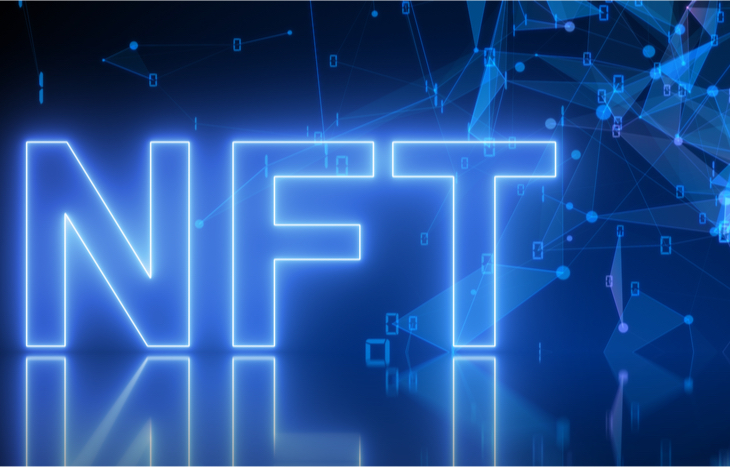A Step-by-Step Guide for How to Invest in NFTs
Non-Fungible Tokens (NFTs) are taking the investment world by storm. Whether you’re a crypto evangelist or simply someone looking to diversify your portfolio beyond traditional debt and equity securities, NFTs offer enticing appeal. Yet, because they’re new and novel, many people aren’t quite sure how to invest in NFTs. After all, you can’t just buy and sell them through your broker like traditional investment products.
The process for investing in NFTs isn’t overly complex; however, it does require a few additional steps that many investors may not be familiar with. From opening a digital wallet, to funding the purchase of an NFT, to actually holding the token as an asset, there’s a lot to learn.
Here’s a brief step-by-step guide for how to invest in NFTs. You’ll also learn what to keep in mind as you explore the growing world of crypto assets.

What are Non-Fungible Tokens (NFTs)?
NFTs are a unit of data, representing a one-of-a-kind digital store of information. Most investors misunderstand this as ownership rights to whatever the data represents. That’s not quite the case. Instead, NFTs represent the ownership record on the blockchain. The best way to explain an NFT is through an example.
Let’s say you purchase an NFT of one of the Bored Ape Yacht Club apes. In doing so, you own the record for that image on the blockchain: the verifiable original. So, even though other people can view the image or even use it on the web, you own the de-facto original. In oversimplified terms, owning an NFT is similar to owning an original work of art, while everyone else simply owns prints.
NFTs don’t just represent images, either. Virtually any digital item can become an NFT, from music and movies, to interactive games and even wedding rings. Moreover, any NFT can hold value so long as there’s demand for it. So, how do you buy them?
How to Invest in NFTs
Step 5: Create a Digital Wallet
Much like you need a brokerage account to buy and sell stocks, you need a way to purchase and store the record of an NFT. This happens in a digital wallet. Before you can purchase a digital asset, you’ll need to set up a digital wallet with a provider like Metamask, Math Wallet, AlphaWallet or Coinbase.
The reason for a digital wallet is twofold. Not only is it where you’ll keep the hash address for your NFT’s location on the blockchain, it’s where you’ll store the cryptocurrency used to purchase the NFT. That’s right, before you can invest in an NFT, you’ll need to buy crypto: usually Ethereum.
Step 4: Find an NFT Marketplace
Once you’ve set up a wallet and funded it with cryptocurrency, you can begin prospecting a purchase. To do that, you’ll need to visit an NFT marketplace. The largest include OpenSea, Axie, Larva Labs and Rarible. There are plenty of other places to get NFTs as well; marketplaces are usually the most diverse in terms of variety.
When browsing for NFT investments, look for assets you believe will appreciate in value. Good targets are NFTs that are part of a collection, those associated with a famous person or organization, or those that represent something significant in digital culture. Remember, like all assets, demand is what will drive appreciation.
Step 3: Purchase an NFT Investment
After you’ve located an NFT you want to invest in, you can purchase it using cryptocurrency. Many NFT marketplaces will use an auction process, so you may need to bid against others to secure the asset.
The most important thing to remember about buying NFTs with crypto is that the price you see isn’t the price you’ll pay. There’s a cost for staking your NFT to the blockchain, called a gas fee. Depending on the cryptocurrency used and the amount paid for the NFT, gas fees can become significant. For example, Ethereum is known for having high gas fees, and a purchase of $50 could actually cost you $150!
Step 2: Holding the NFT
Bought and paid for, your NFT lives on the blockchain. You’ll hold the unique hash in your digital wallet, which proves you’re the de-facto owner of the asset based on the public records of ownership. Think of it like holding your asset in a safety deposit box. Anyone can see and view your NFT, but no one else can prove that they own the record of the original on the blockchain.
Step 1: Selling the NFT
Over time, hopefully your NFT will appreciate in value. If it does and you want to sell, you can head back to an NFT marketplace and list it for sale or for auction. Much like at an art auction, bidders will drive the price up until it meets a minimum threshold. And after that the highest bidder will win the rights to the NFT entry on the blockchain. You’ll transfer the ownership hash from your wallet to theirs, fully divesting yourself of the asset.
How to Invest in NFTs: Demystifying the World of Crypto Assets
Even with this simplified guide for how to buy NFTs, many seasoned investors still don’t truly understand crypto investments and how they behave. To stay abreast of crypto markets and to learn more about what to expect from blockchain-backed assets, make sure to subscribe to an investment newsletter that keeps you up-to-date and in-the-know about this emerging asset class. Crypto assets like NFTs offer exciting possibilities, and they’re a growing part of many investors’ diversified portfolios for a reason.





